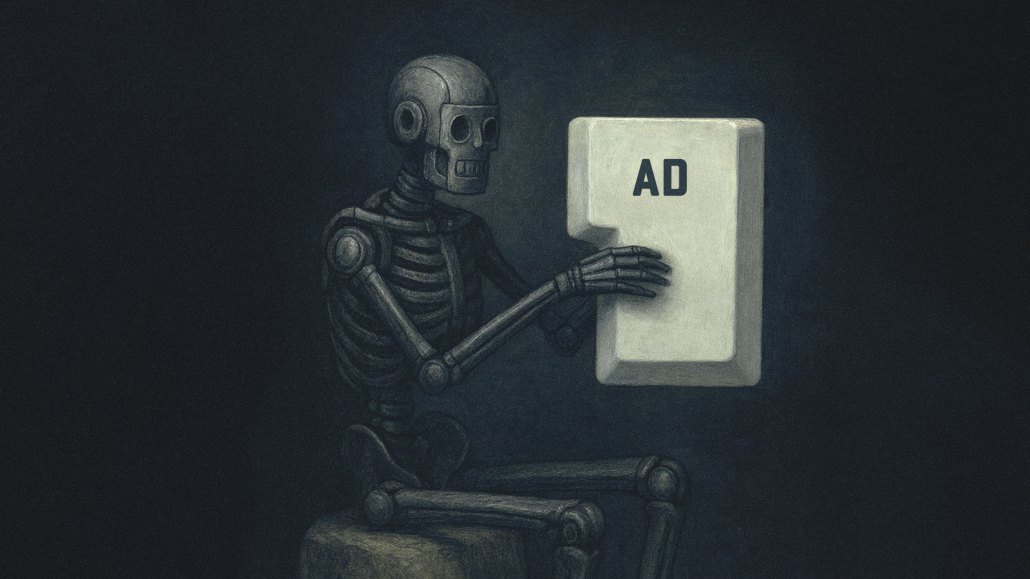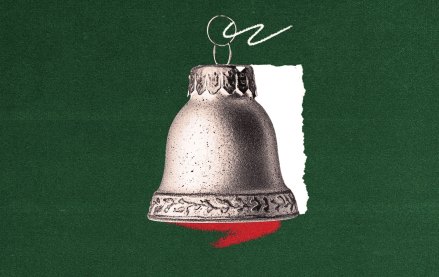
By now, it’s hard to ignore where OpenAI is headed.
The executive hints, the ad world hires, the burn rate that would make tech CEO blush – all signs point to advertising. This week’s launch of its long-rumored browser only reinforces that view. Digiday traces the steps that brought the company to this inevitable moment.
December 2024: OpenAI reverses anti-advertising stance
Last December, the company’s CFO Sarah Friar made it publicly clear: OpenAI had “no active plans to pursue advertising”, but the team was open to exploring new revenue streams, she told the Financial Times.
That was a huge step on from the initial venom expressed towards advertising by CEO Sam Altman. He’d previously publicly said he hated advertising “as an aesthetic choice” and referred to it as a “last resort” for the company. “Ads-plus-AI is… uniquely unsettling to me,” he said during an interview at Harvard University in May 2024.
At that time Friar made this 180 shift, OpenAI had reported an annualised revenue of about $4 billion, but also had an annual expected cash burn (minus spend revenue) of $5 billion, according to the Financial Times.
Simply put, as much as Altman hated the idea of it, the team had to at least begin to reconsider their stance. The tech they build and run is a costly effort, and one that requires a consistent, stable revenue stream.
April 2025: Great expectations
Just four months on, internal documents forecasting “free user monetization” (also known as advertising) were leaked. OpenAI optimistically projected it could bring in $1 billion in 2026, and $25 billion by 2029. For context, Amazon – now the third largest digital advertising company on the planet – generated $56 billion in ad revenue last year, but it’s able to sell commercials against the NBA, The Rings of Power and its vast commerce data reservoir. OpenAI’s userbase is certainly enormous, but despite user demand for its chatbot to replace their therapist or govern their dating lives, it’s less clear whether the information it holds on its users would meet advertisers’ needs.
Caveats aside, that OpenAI sits on a monetisable audience isn’t in doubt. “Anybody with eyeballs has a very viable opportunity to generate significant revenue. It’d be very short sighted for anyone to say that this wouldn’t be something they were going to consider doing,” said Michael True, CEO of ad measurement firm Prescient. “I think it’s a business decision that open AI is going to have to strongly consider, and as they start to inch towards it, I think you’re they’re going to become one of the major sources of search and advertising inventory,” he added.
May 2025: OpenAI poaches Instacart’s CEO Fidji Simo
After joining OpenAI’s board in 2024, Simo was tapped for the CEO of applications role in May, which sees her report directly into the company’s CEO Sam Altman.
Prior to her four-year stint heading up Instacart, Simo spent a decade at Meta, where she started her journey heading up the launch of advertising in Facebook’s news feed, and ultimately ended up leading the Facebook app.
“Fiji Simo ran a lot of product for Facebook for a long time,” said Jim Louderback, CEO and editor of Inside the Creator Economy newsletter. “She then went over to Instacart to be CEO for a while. But she came into OpenAI to run product a couple of months ago. You can already see that what she learned at Facebook, she’s applied to Sora. You can see her fingerprints on this one, which is great. I’m a big fan of hers.”
July 2025: Sam Altman says “I’m not totally against ads” for ChatGPT
Nine months after dismissing ads as a necessary evil, Sam Altman is singing a different tune. On the debut episode of The OpenAI Podcast, he conceded that ads might not be so bad after all. Turns out, spending $2.5 billion has a way of changing your principles.
In conversation with host Andrew Mayne, Altman said: “We haven’t done an advertising product yet” – “yet” being the key word.
“I’m not totally against it,” he added, saying that he actually enjoys ads on platforms such as Instagram (and had even bought items from them). But equally Altman recognized that any step towards incorporating or building an ad product would “take a lot of care to get right.”
Aug 2025: Nick Turley says ads possible if done right
Almost three years on from its initial release, OpenAI launched GPT-5 for ChatGPT. The push didn’t go well, with users complaining of lost functionality, hallucinations and a perceived lack of expressiveness. That same month, Nick Turley, OpenAI’s head of ChatGPT, went on the campaign trail in an interview with The Verge, boasting that the app had hit 700 million active users while continueing to progress OpenAI’s reluctant embrace of advertising.
“The thing that makes ChatGPT magical is the fact that you get the best answer for you and there’s no other stakeholder in the middle… we’re not trying to upsell you,” he said. “We’d have to be very thoughtful and tasteful about it.”
Soon enough, those words would turn into action.
September 2025: OpenAI’s vacancy for an ad-platform engineer and search for a monetization chief
OpenAI laid the foundations for ads expertise with the hire of Simo. What better next step than to hire someone to oversee the monetization strategy, and in particular, bring ads to ChatGPT? Simo is already on the hunt for someone to oversee all monetization efforts for the business, including subscriptions, according to Sources, that’ll report directly to her.
Per Sources, she’s already meeting with prospective candidates, including some of her former Facebook colleagues, so it won’t be long before a shortlist of names start doing the rounds.
Plus to get the ball rolling, OpenAI posted a vacancy for a San Francisco-based growth paid marketing platform engineer, with a salary range between $160,000 to $385,000 plus offers equity. The role sits within ChatGPT’s growth team, and will be responsible for building and scaling systems that power OpenAI’s marketing channels and spend efficiency, according to the post.
October 2025: OpenAI launches Sora 2 app and its ChatGPT-Atlas browser
When a platform knows it’s going down the ads path, the next step is finding surfaces for them to appear.
First up, there’s Sora – OpenAI’s standalone AI-content app, which launched on Sept. 30, for iOS devices in the U.S. and Canada only – for now. And we’ve already seen how ads can fit into the likes of Meta’s Instagram, or TikTok, seamlessly.
This was soon followed by its launch of ChatGPT Atlas – OpenAI’s long-awaited browser, which puts ChatGPT at the center of it. And Google’s Chrome is a pretty good measure of how ads can be integrated into the user experience with search.
Let’s talk numbers
Running an AI company is an expensive business, least of all when you’re fast tracking AI content apps and browsers – arguably taking on two, if not three of the biggest tech players in the world: Google, Meta and then TikTok (from a doom-scrolling content perspective).
Which is why every platform out there does the anti-ads dance before backtracking and ultimately incorporating them at some point.
Revenue-wise, the company generated $4.3 billion during the first half of 2025, meaning the company was on track to reach its $13 billion full-year projection, according to The Information. However, during H1 2025, OpenAI also burned through $2.5 billion, partly thanks to the costs it incurred on research and development for its AI models.
Added to that, the company recorded a $7.8 billion operation loss during the first half of the year, per The Information. And that’s not even the worst of it. OpenAI expects to burn through $115 billion through 2029, before it finally turns a profit in 2030 – a result of the projected $450 billion price it has to pay to rent servers from cloud providers.
When it comes to downloads, ChatGPT reached around 500,000 downloads within its first week (back in 2023), according to TechCrunch, when the app was still only available on iOS devices in the U.S.
OpenAI managed to beat its own record, with the launch of its standalone AI-video app, Sora. The AI-content app smashed ChatGPT’s record to become the most downloaded app within less than a week. OpenAI’s head of Sora, Bill Peebles posted on X that the app had reached 1 million app downloads in less than five days – even faster than ChatGPT reached that milestone.
Clearly, the company is reusing its old playbook for enticing attention to its apps. At the time of publishing this article, Sora is still just invite-only in the U.S. and Canada, for iOS devices.
More in Marketing

Pandora is betting on AI agents to scale service and emotional selling during the peak holiday season
Pandora is using AI agents to scale customer service and replicate emotional in-store selling online, just as peak season puts pressure on margins and teams.

Rembrand’s CEO wants to grow virtual ad placements in streaming, and he’s looking elsewhere for models
Omar Tawakol wants to improve advertising within the streaming world, and is working with advertisers and publishers to improve that experience.

Marketers are keen to use generative AI in ad campaigns, but hidden costs lurk
Marketers across the industry want to use AI to cut down on time spent in creative production. It’s not so simple in practice.







